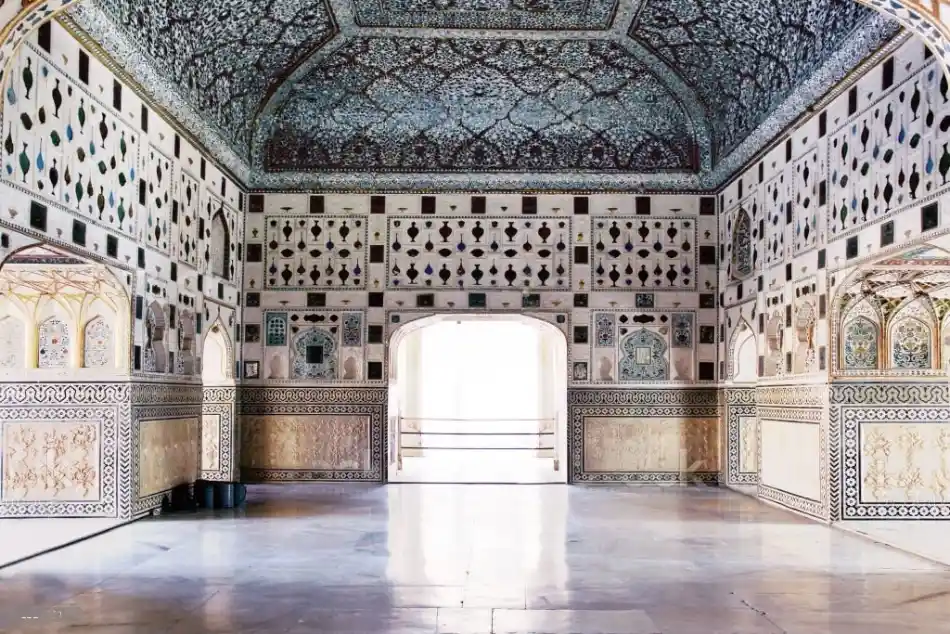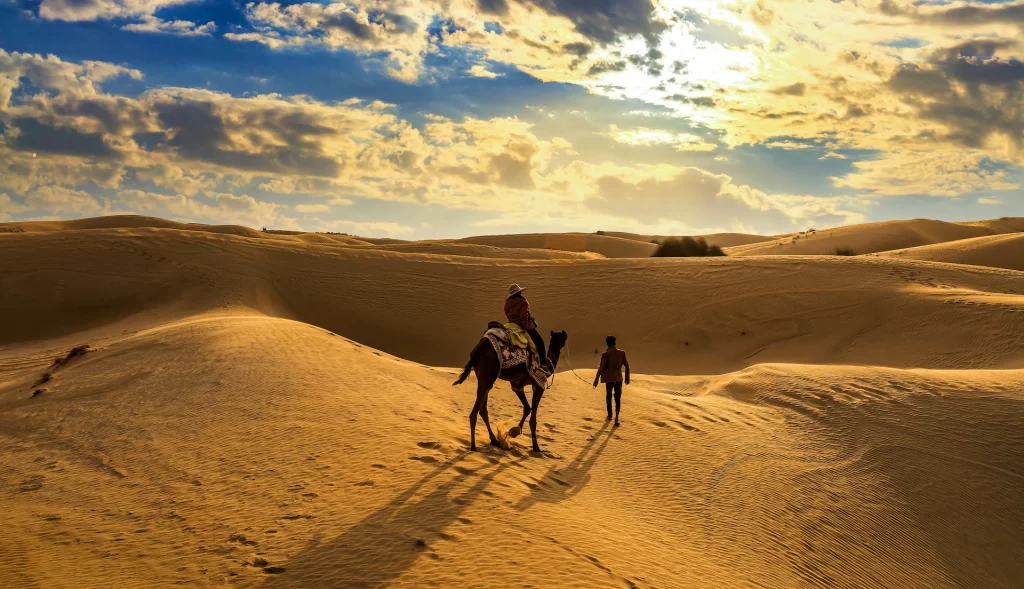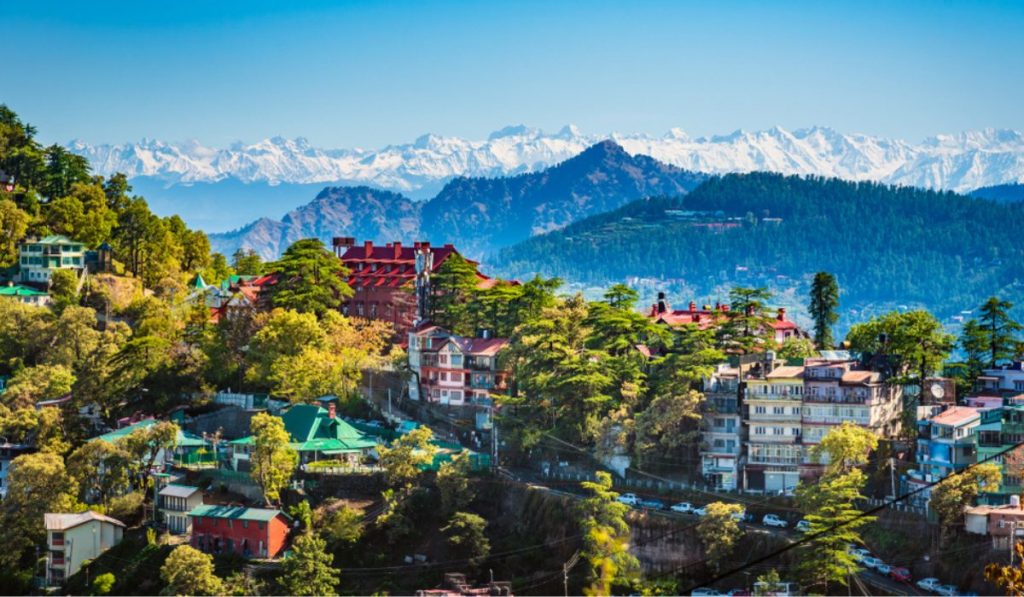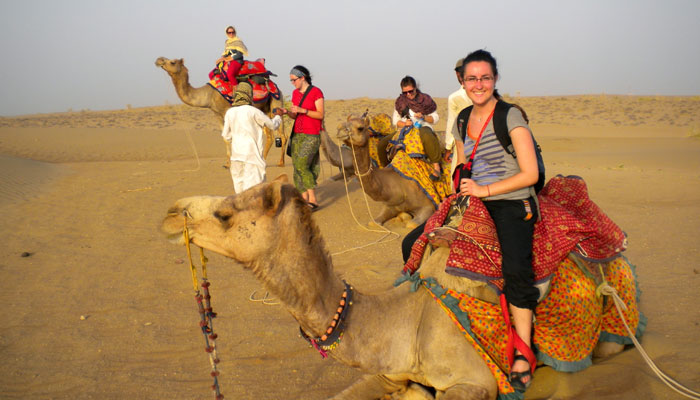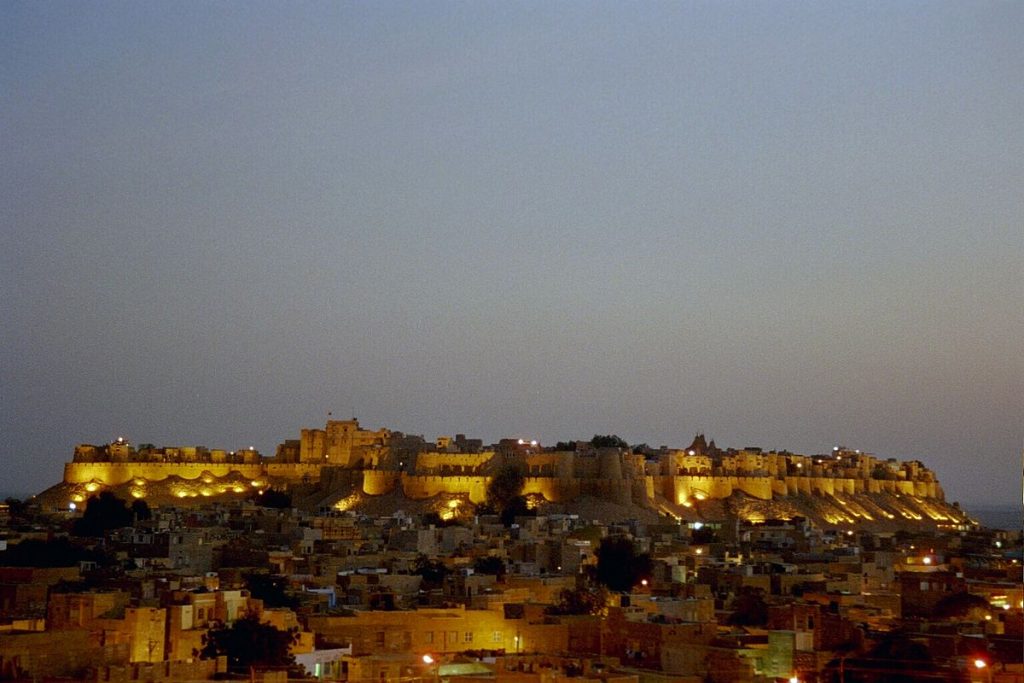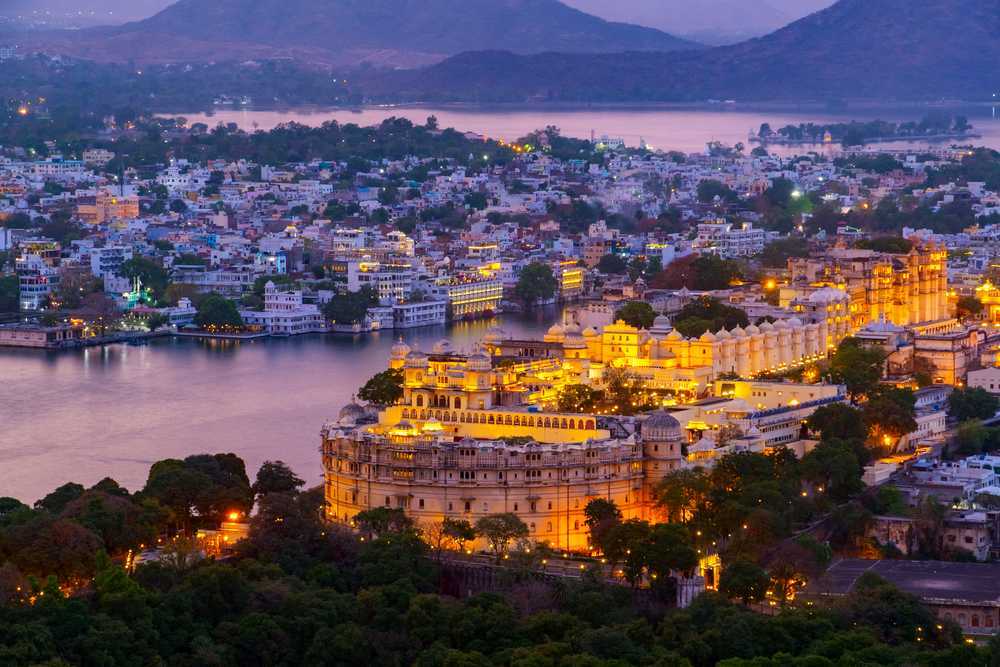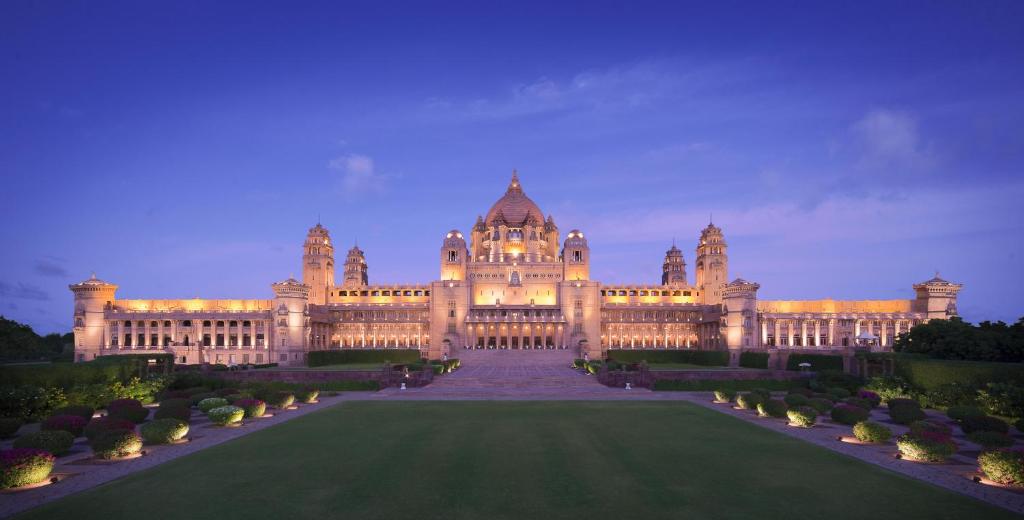Palaces in Rajasthan
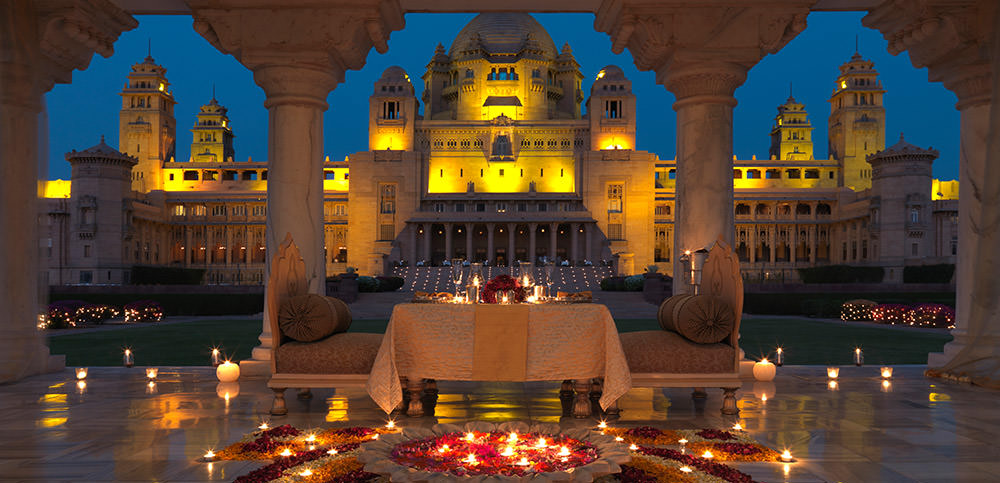
Lalgarh Palace, Bikaner: This grand palace is one of the Palaces in Rajasthan that has an architectural masterwork in red sandstone, and was built by Maharaja Ganga Singh Ji in the memory of his father Maharaja Lal Singh Ji in 1902. Sir Swinton Jacob designed this oriental fantasy. This architecture is a fusion of Rajput, Mughal and European architecture. The exterior contrasts dramatically with the oriental interiors and amenities. The palace has beautiful latticework and filigree work, which are hallmarks of a great craftsmanship. Palaces of Rajasthan.
The Palace has an amazing collection of well-maintained paintings and hunting trophies. Sprawling lawns with blooming bougainvillea and dancing peacocks make a visual extravagance.
Designed by a Britisher for Maharaja Ganga Singh, this palace displays a magnificent blend of Oriental and European style. The terraced lawns and the Bougainvillea bushes add beauty to the palace. Peacocks stroll around the palace, which has been partly converted into a hotel.
The intricate filigree work and latticework exhibit the refinements and delicacy of craftsmanship. The palace museum displays well preserved hunting trophies and old photographs. The library of the Lalgarh palace is supposed to have the largest collection of original Sanskrit manuscripts on parchments, copper, and gold or silver plaques.
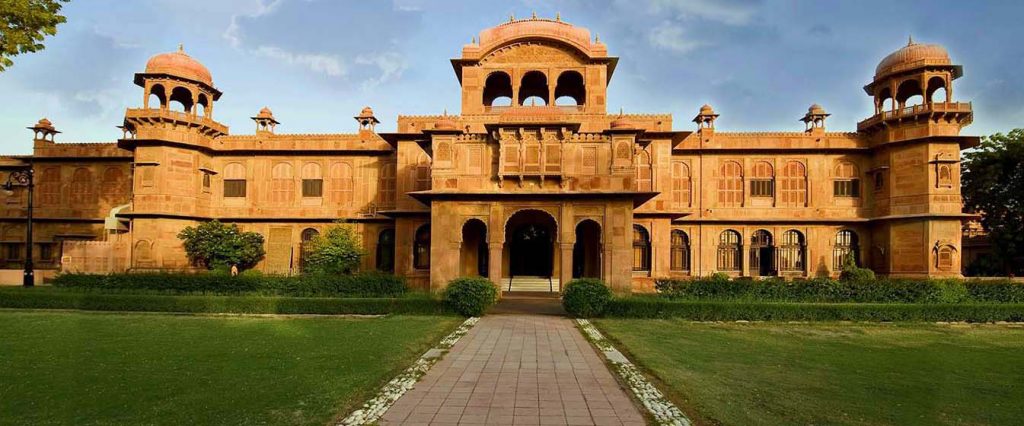
Built in the memory of maharaja Lal Singh, Lalgarh Palace has a graceful facade of red sandstone and is one of Maharaja Ganga Singh’s great achievements. The maharaja ruled for a period of 56 years. The state especially prospered under his rule.
Umaid Bhawan Palace, Jodhpur: Maharaja Umaid Singhji who built this palace was fascinated with western lifestyles so he marshaled the services of a well-known Edwardian architect, Henry Vaughan Lanchester, a creditable equal of Edward Lutyens (architect of New Delhi) to construct a three hundred and forty-seven roomed Umaid Palace.
This was to become India last of the great palaces and the biggest private residence in the world. Spectacular Central Rotunda, the cupola rises to a hundred and five feet high; the Throne Room with its exquisite Ramayana murals; an elegant wood-panelled library, and even a private museum; an indoor swimming pool, a Billiards Room, tennis courts and unique marble squash courts makes Umaid Bhawan Palace is unabashedly the most magnificent.
This is one of the best from the Palaces in Rajasthan palace was also built with superficial intentions of providing employment to famine-stricken farmers. The Palace now is a five-star deluxe palace hotel. The museum of the palace is highly recommended for its display of weapons, an array of stuffed leopards, a huge banner presented by Queen Victoria and an incredible collection of clocks.
This is known as Umaid Bhawan Palace because of the particular type of sandstone used, to build it – which is not weathered. Portions of the Umaid palace have been converted into a hotel and a museum.
 Jag Niwas Palace, Udaipurn (Palaces in Rajasthan): The first island palace of Lake Pichola and considerened as the best Palaces from the list of Palaces in Rajasthan. Jagmandir was constructed by Maharana Karan Singhji in 1622 AD and was intended to be a pleasure palace for imperial parties and functions.
Jag Niwas Palace, Udaipurn (Palaces in Rajasthan): The first island palace of Lake Pichola and considerened as the best Palaces from the list of Palaces in Rajasthan. Jagmandir was constructed by Maharana Karan Singhji in 1622 AD and was intended to be a pleasure palace for imperial parties and functions.
It has served as a shelter for Moghul Emperor Shahjahan when he was a prince against the wrath of his father in the seventeenth century.
The tale goes on to say that Jagmandir was the inspiration behind the world-renowned Taj Mahal, which Shah Jahan built in the memory of his departed wife, Mumtaz.
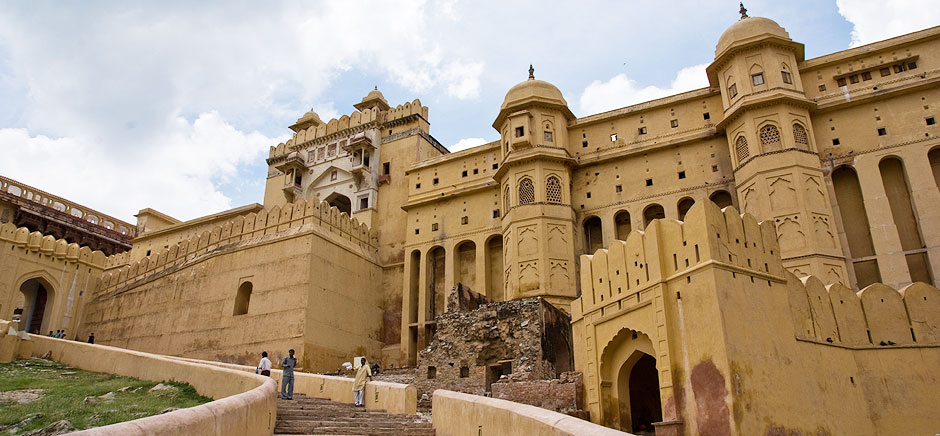
The City Palace, Udaipur: City Palace towers over the Pichola Lake. Maharana Uday Singh initiated in the construction of the palace but succeeding Maharanas added several palaces and structures to the complex retained a surprising uniformity to the design. The entry to the Palace is from the Hati Pol, the Elephant gate. The Bari Pol or the Big gate brings you to the Tripolia, the Triple gate.
It was once a custom that the Maharana would weigh under this gate in gold and silver, which was distributed to the populace. It is also now the main ticket office. Balconies, cupolas, and towers surmount the palace to give a wonderful view of the lake.
 Suraj Gokhada or the balcony of the sun is where the Maharana would grant public audiences mainly to boost the morale of the people in difficult times. The Mor Chowk is the peacock square and gains its name from the vivid blue mosaic in the glass of a peacock that decorates its walls. Palaces in Rajasthan will always have the name of this palace.
Suraj Gokhada or the balcony of the sun is where the Maharana would grant public audiences mainly to boost the morale of the people in difficult times. The Mor Chowk is the peacock square and gains its name from the vivid blue mosaic in the glass of a peacock that decorates its walls. Palaces in Rajasthan will always have the name of this palace.
The main part of the palace is now preserved as a museum displaying a large and diverse array of artifacts. Down steps from the entrance are the armory museum exhibiting a huge collection of protective gear, weapons including the lethal two-pronged sword.
Nathmal-ki-Haveli, Jaisalmer (Palaces of Rajasthan): Two architect brothers built it in the 19th century. Interestingly, while one concentrated on the right, the other concentrated on the left and the result is a symphony epitomizing the side by side symmetry during construction. Paintings in miniature style monopolize the walls in the interior. Mighty tuskers carved out of yellow sandstone stand guard to the haveli.
It’s like straight out of an Arabian Nights fable. The name Jaisalmer induces a dramatic picture of utter magic and brilliance of the desert. The hostile terrain notwithstanding the warmth and color of people is simply overwhelming. One of the main draws is the daunting 12th century Jaisalmer Fort. The beautiful Havelis which were built by wealthy merchants of Jaisalmer are yet another interesting aspect of the desert city.
And you can let your eyes caress the sloppy sand dunes while you ramble your way in a camel safari. The desert citadel is truly a golden fantasy in the Thar Desert. Bhatti Rajput ruler Rawal Jaisal, after whom the city finds its name, founded Jaisalmer in 1156. On the advice of a local hermit Eesaal, he chose the Tricut Hills as his new abode abandoning his vulnerable old fort at Luderwa just 16 kilometers northwest. Palaces in Rajasthan.

Patwon-ki-Haveli, Jaisalmer (Palaces of Rajasthan): This is one of the largest and most elaborate Haveli in Jaisalmer and stands in a narrow lane. It is five storeys high and is extensively carved. It is divided into six apartments, two owned by archaeological Survey of India, two by families who operate craft-shops and two private homes. There are remnants of paintings on some of the inside walls as well as some mirror work.
The most elaborate and magnificent of all the Jaisalmer Havelis. It has exquisitely carved pillars and exquisitely carved pillars and extensive corridors and chambers. One of the apartments of this five storeys high haveli is painted with beautiful murals.
Palaces of Rajasthan Patwon-Ki-Haveli is the largest and most elaborate haveli in Jaisalmer. This five-storeyed building extensively carved and is notable for its jharokhas (balconies).

In the early 19th century, the family of Ghuman Chand Patwa, an extremely rich patwa (trader of brocades and expensive embroidery) began construction of this mansion, an effort that took half a century.
Top 10 Best Restaurants in Udaipur, Top 10 Heritage Hotels in Jodhpur, Best Tours of India, Palaces in Rajasthan, Places to Visit Near Pune in Monsoon and Famous Places to Visit in Varanasi – you can also refer to these blogs.



